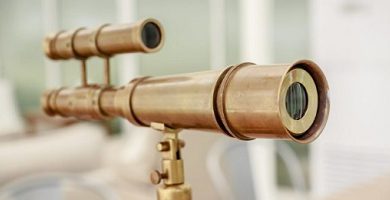What is measurement?
We explain what the measurement is and how this process should be carried out. In addition, the different types of measurement that exist.
-
What is measurement?
The measurement, in general, is to compare the measure of one thing with the measure of another . For this, different numerical values or dimensions must be assigned to one or more objects using different procedures.
The measurement, then, is a basic process that consists in comparing a chosen pattern with another object or phenomenon that has a physical magnitude equal to it in order to calculate how many times the pattern is contained in that particular magnitude. However, this action that seems so simple to calculate is difficult when what you want to measure and express numerically is a bit more intangible or even evanescent.
-
How should the process be?

The measurement process aims to distinguish objects, phenomena or cases and then classify them . To be valid, this process must respond to some requirements and principles. First, it must be valid. That is, there must be ways to demonstrate the way in which the measurement is performed.
In addition, the measurement process must be reliable, must be applied repeatedly in several cases and always provide the same – or similar – results. Finally, the precision process is necessary , this means that the measure must be accurate when it can be located with complete accuracy in relation to the purpose to be obtained.
-
Types of measurement
There are different types of measurement and we will develop them below:
- Direct measurement: We can obtain this type of measurement by using a measuring instrument that is able to compare the variable to be measured with a certain pattern. In this type of measurement, two objects that have the same characteristic must be compared. That is, if we use a calibrator, the length of an object will be calculated in comparison to the length established in it. Another clear example of this is if we measure the frequency of an object with the frequency of a strobe.
- Reproducible measures: These are those in which the same result can always be obtained if a series of comparisons can be made between the same variable and the measuring device used. These are procedures that do not destroy or produce any significant alteration in the subject being measured. For example, if the same side of a bed is measured several times, the results will always be the same.
- Statistical measurement: It occurs when different results are obtained at the same time even if several comparisons are made between the same variable and the same measuring device selected. If you want to compare the number of people who read a certain newspaper , even though the number is different every day, you can also achieve a result that will be the average or annual value.
- Indirect measurement: Measurements between variables cannot always be calculated directly, either because of their size, nature or other possible obstacles. It is for this reason that the indirect measurement occurs when the desired measurement is calculated by calculating one or more different magnitudes to then be able to calculate the desired magnitude by calculating the magnitude or quantities calculated directly.
However, the results are not always satisfactory since different types of errors can occur when making a measurement. Depending on the occurrence of errors, systematic or random errors can be distinguished. On the other hand, if we refer to the quantification of errors, we can find absolute errors or relative errors.





